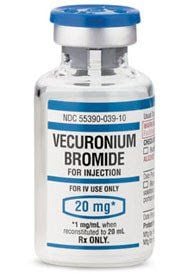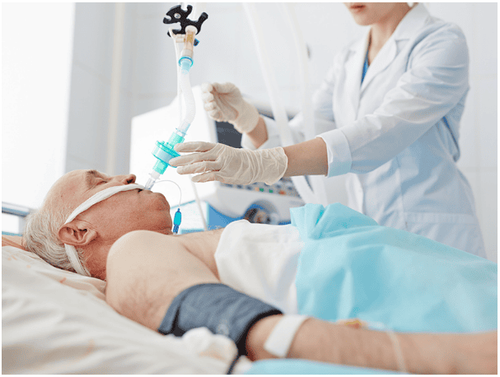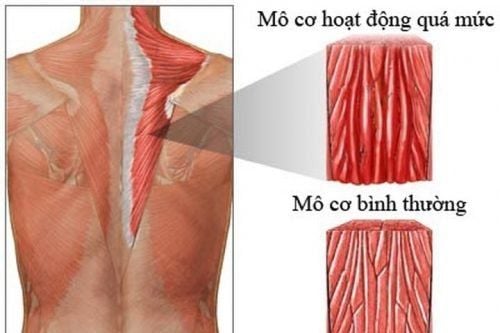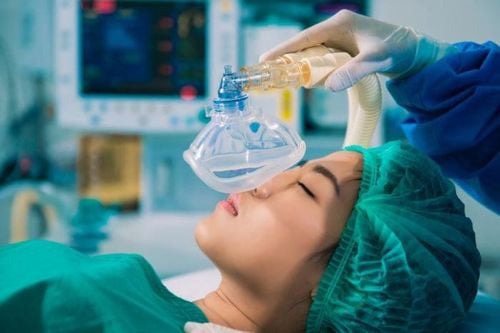This is an automatically translated article.
The article was written by Specialist Doctor II Nguyen Trung Thanh - Anesthesiologist and Anesthesiologist, Department of Surgical Anesthesia - Vinmec Central Park International General Hospital.
In surgical anesthesia, anesthesiologists often combine many drugs to achieve good anesthesia for the patient, in which 3 indispensable drugs are anesthetics, analgesics and muscle relaxants.
1. What is a muscle relaxant?
Muscle relaxants are drugs that cause reversible rhabdomyolysis to facilitate anesthesia and surgery.
When using muscle relaxants, all skeletal muscles can't contract, including respiratory muscles, so the patient can't move the whole body and can't breathe on his own, but needs the support of a breathing machine.
2.Why use muscle relaxants in anesthesia?
In some surgeries that require airway control, the anesthesiologist will place a breathing tube (intubation) for the patient. This procedure causes dangerous reflexes and is very painful, requiring anesthesia, pain relievers, and muscle relaxants.
Muscle relaxants in this case help to avoid reflexes that can be dangerous and limit damage to the structures of the pharynx and glottis, especially the vocal cords, while the doctor is operating the breathing tube for the patient.
In addition, muscle relaxants make muscles "softer" to help surgeons more easily manipulate in surgery of the chest, abdomen, orthopedic bones,...
3.Mechanism of action of muscle relaxants

3.1 Physiology of muscle contraction To understand the mechanism of action of muscle relaxants, we need to understand the physiology of muscle contraction.
The neuromuscular junction is the junction of nerve and skeletal muscle in which the presynaptic nerve terminal stores vesicles containing Acetylcholine (ACh) and postsynaptic muscle cells that bind Ach receptors (AChRs). ). When Ach binds to AChR, it initiates depolarization, which causes muscle contraction.
The mechanism of muscle contraction can be better explained as follows: when an action potential appears in the nerve, the calcium channels open to allow the calcium current to enter the cell, thereby initiating the release of Ach from Synaptic vesicles diffuse into the synaptic cleft to bind to the AchR receptor in muscle cells. AchR becomes activated allowing sodium and calcium to enter muscle cells, depolarizing muscle cell membranes and causing muscle contraction.
When sodium and calcium can no longer enter the muscle cells, potassium ions leave the muscle cells to initiate repolarization and the AchR returns to a resting state to prepare for further activation.
After initiation of depolarization, Ach enters the synaptic cleft and is cleaved into Acetyl CoA and Choline by the enzyme Acetylcholinesterase.
3.2 Mechanism of action of muscle relaxants Based on the mechanism of action, muscle relaxants are divided into 2 types: depolarizing muscle relaxants and non depolarizing muscle relaxants. Muscle relaxants when injected into the body will compete with Ach for binding to AChR.
Depolarizing muscle relaxants (succinylcholine): the mechanism of action is the same as that of Ach mentioned above. Succinylcholine binds tightly to AchR, causing depolarization of the cell membrane, rendering the cell membrane unresponsive to Ach stimulation, leading to muscle paralysis. This drug is characterized by muscle relaxation after muscle tremor and is discontinued when the drug is separated from the AchR and degraded by pseudocholinetherase.
Non-depolarizing muscle relaxants consisting of 2 aminosteroid groups (pancuronium, vecuronium, rocuronium) and benzylinsoquinoline group (D-tubocuraine, atracurium, cis-atracurium, mivacurium) high concentrations of reversible competitive antagonists with Ach for binds to AchR. Ach cannot bind to AchR, so it does not depolarize the muscle cell membrane, so the muscle relaxes. The characteristic of non-depolarizing muscle relaxants is that they do not cause muscle vibration.
4. Is it dangerous to use muscle relaxants?

Like most drugs used to treat other diseases, muscle relaxants also have certain side effects, risks and rates of allergic reactions depending on the drug.
Furthermore, because of the paralyzing effect of muscles including respiratory muscles, the use of muscle relaxants is only indicated in surgical anesthesia by anesthesiologists who are experts in the management of airways and certain conditions. Special situations are indicated in mechanical ventilation in the intensive care unit.
After regaining consciousness, there is still a risk of respiratory failure due to residual muscle relaxants in the body. Therefore, surgical cases requiring muscle relaxants will be anesthetized and recovered by the anaesthesia and recovery team to continuously monitor muscle relaxation during surgery and recovery of muscle contraction when the surgery ends with a dedicated monitor TOF- watch.
5. How to recover from muscle relaxant paralysis?
Usually when the muscle relaxant wears off after a period of time (depending on the half-life of each drug), the muscle will work again. However, to speed up this process to help the patient recover quickly the function of the muscles, the most important of which is the respiratory muscle to avoid respiratory failure due to residual muscle relaxants, the anesthesiologist can Add a muscle relaxant to antagonize the effect of the muscle relaxant.
Vinmec International General Hospital is one of the hospitals that not only ensures professional quality with a team of leading medical doctors, modern equipment and technology, but also stands out for its examination and consultation services. comprehensive and professional medical consultation and treatment; civilized, polite, safe and sterile medical examination and treatment space. Customers when choosing to perform tests here can be completely assured of the accuracy of test results.
Please dial HOTLINE for more information or register for an appointment HERE. Download MyVinmec app to make appointments faster and to manage your bookings easily.














